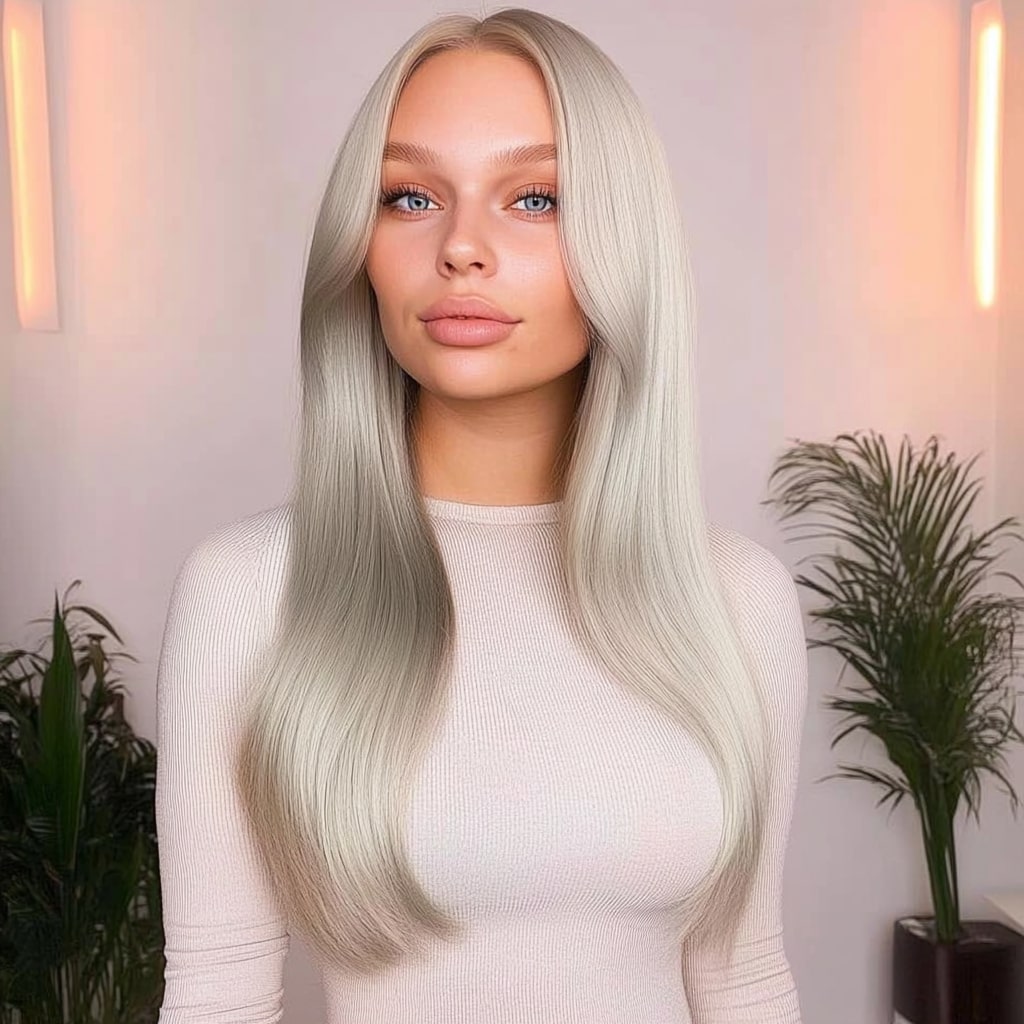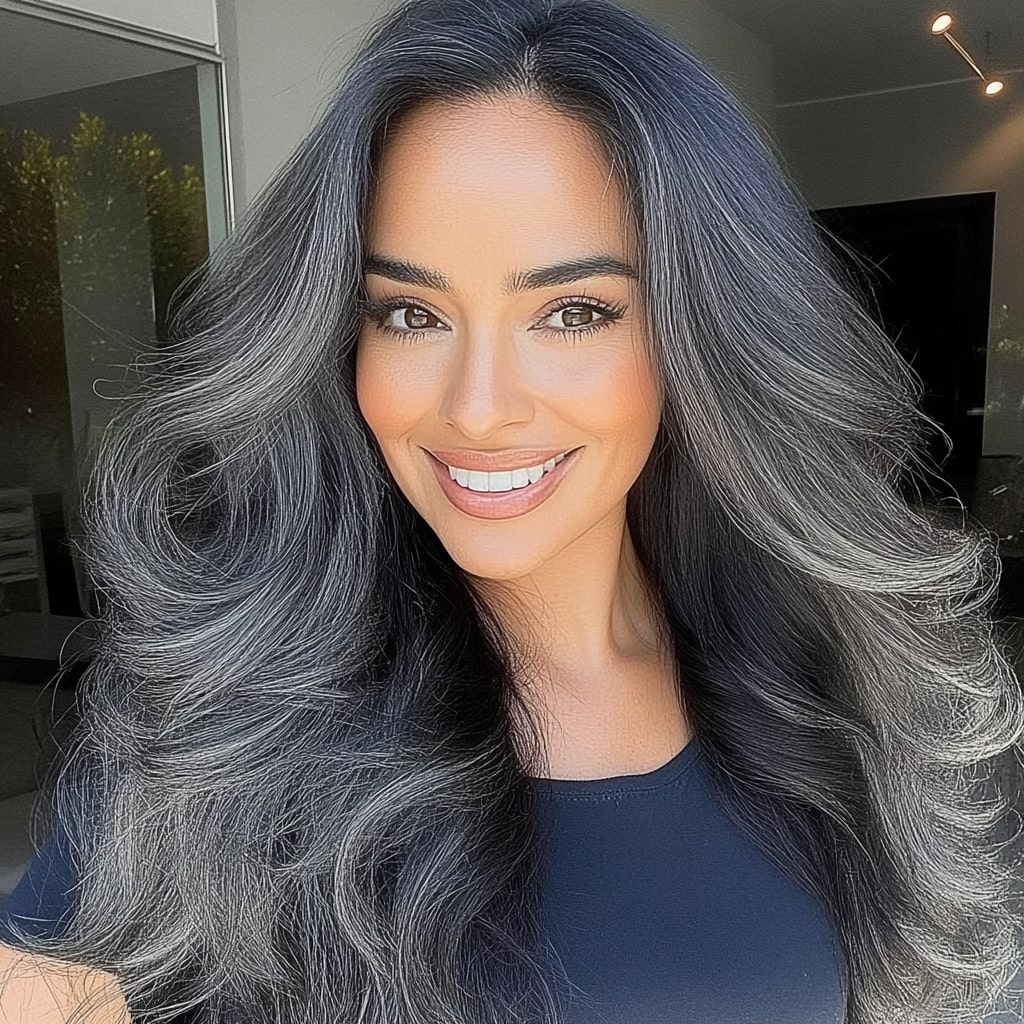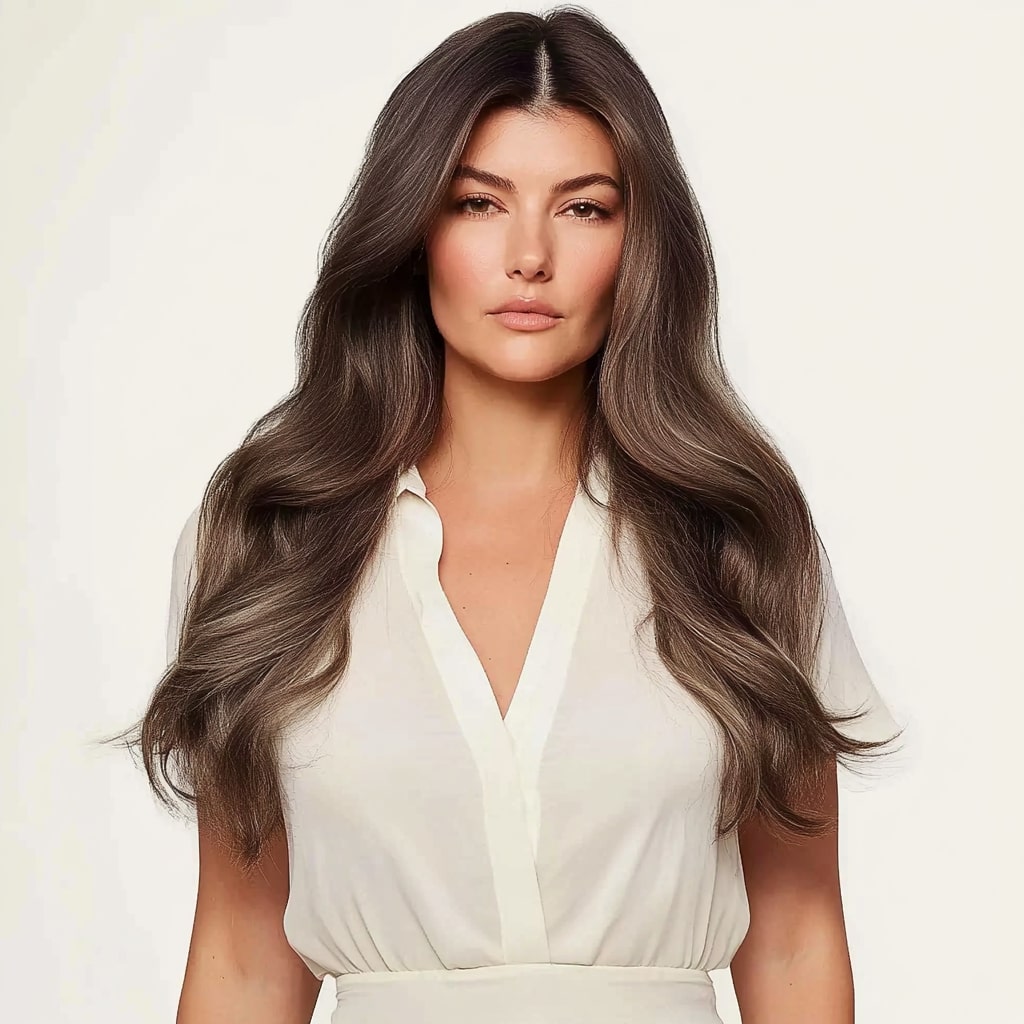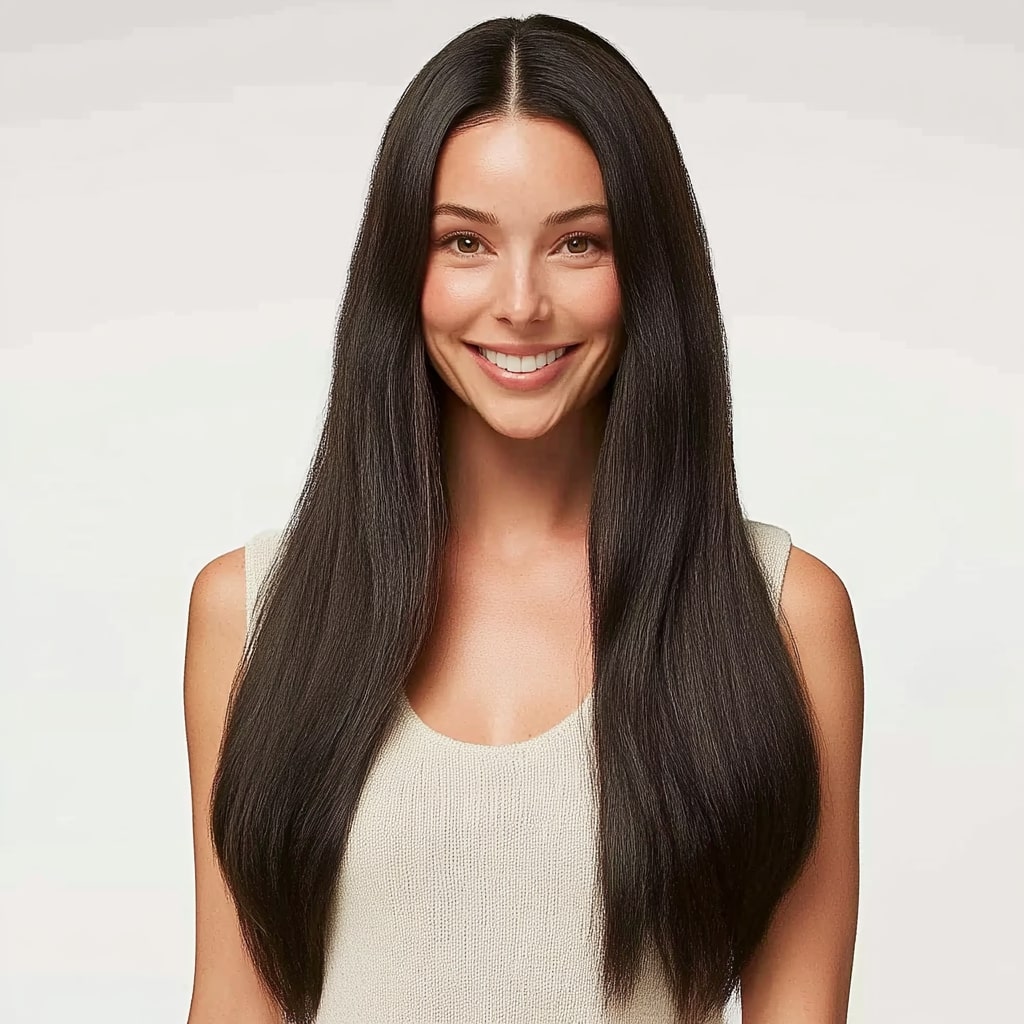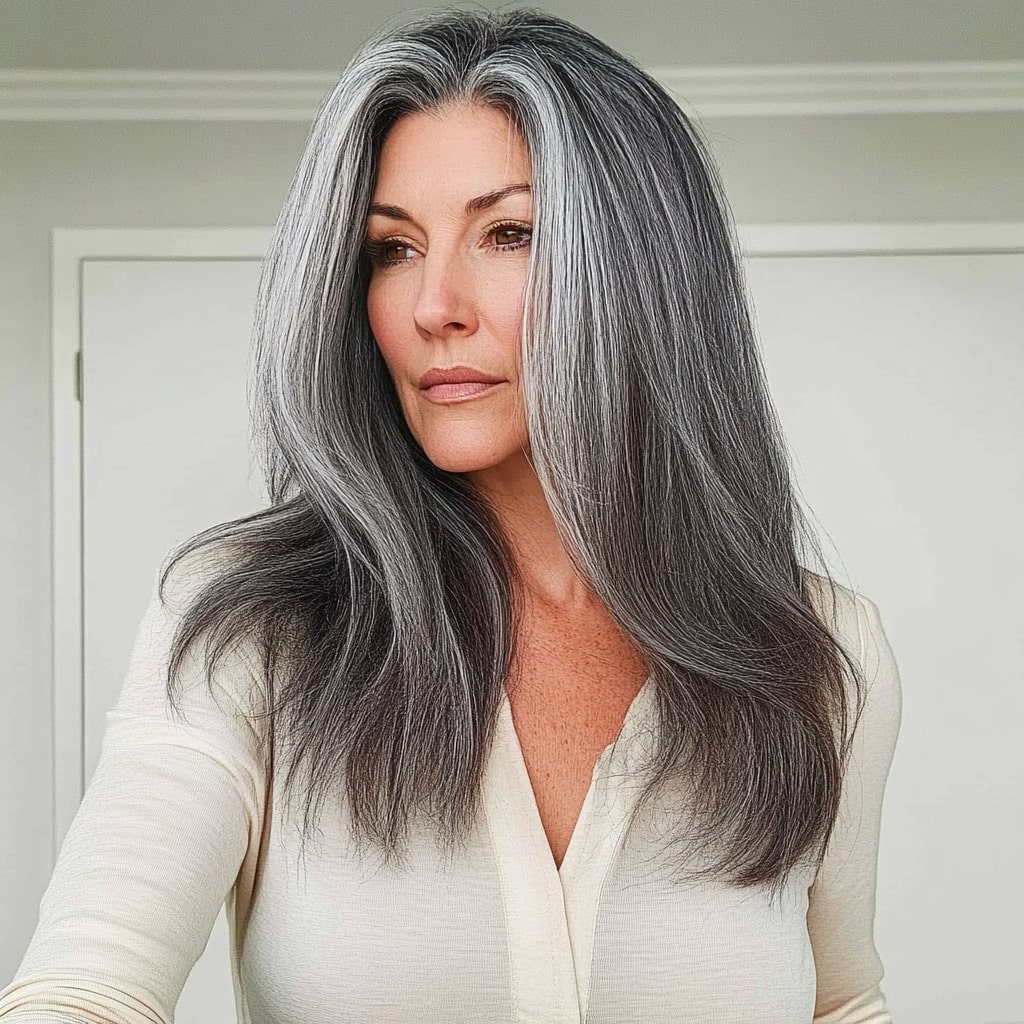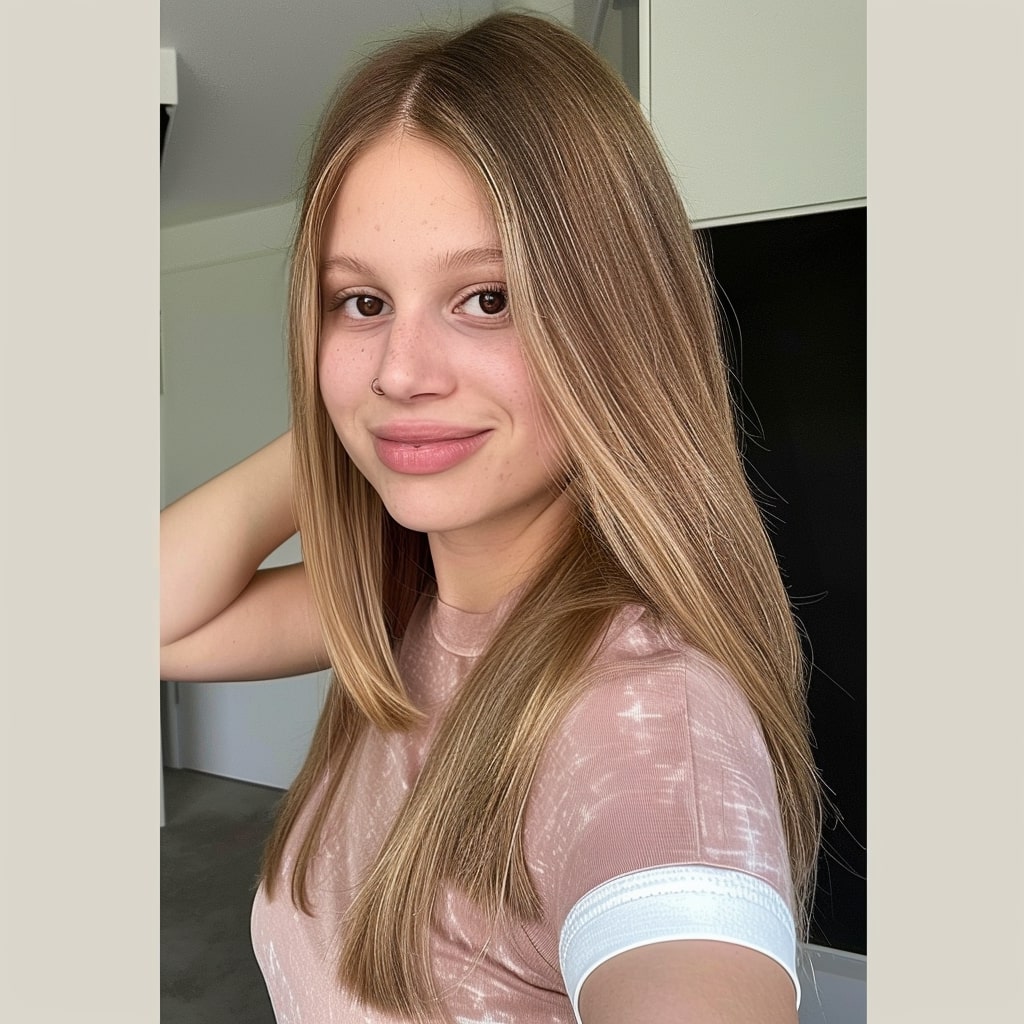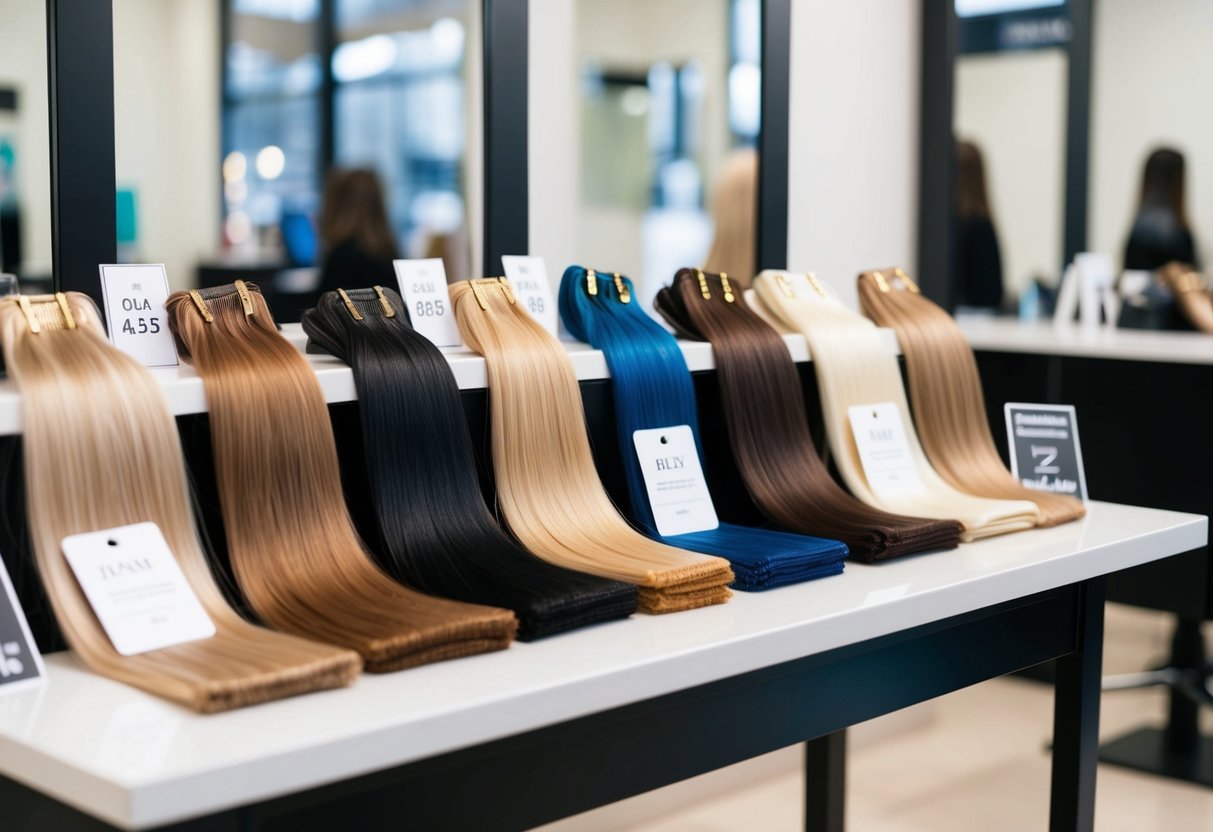The Difference Between Clip-In and Sew-In Extensions: A Comprehensive Guide
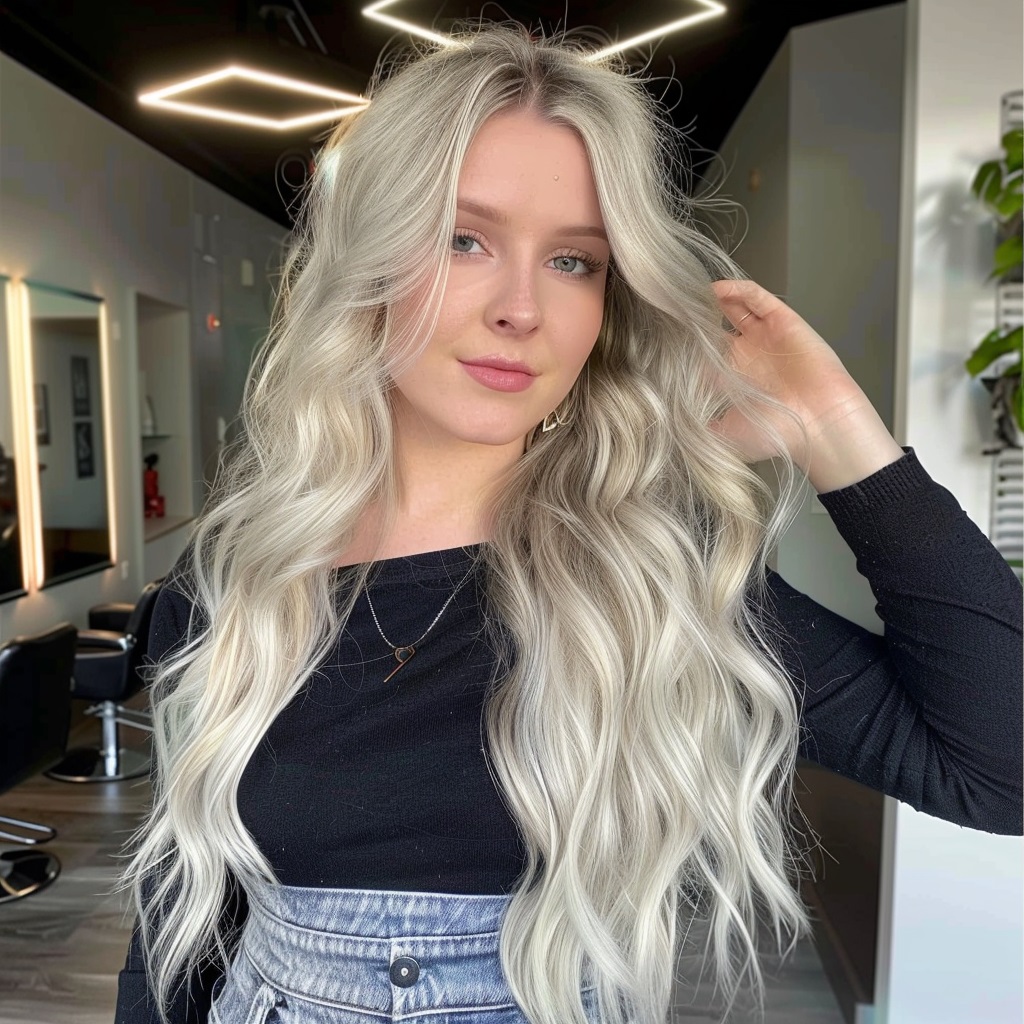
Key Takeaways
- Clip-in extensions are temporary, easy to apply, and versatile, making them ideal for quick changes and special occasions.
- Sew-in extensions are a more permanent solution, offering a secure fit and long-lasting results, but require professional installation and maintenance.
- Clip-in extensions are more affordable upfront and are suitable for most hair types, while sew-in extensions are better for thicker, coarser hair.
- Both types of extensions are available at USA Hair in various lengths and colors, ensuring high quality and affordability.
- Understanding your lifestyle, budget, and hair type is crucial in choosing between clip-in and sew-in extensions.
Introduction
When it comes to enhancing your natural hair with extensions, two of the most popular methods are clip-in and sew-in extensions. Both offer unique benefits and cater to different needs, making it essential to understand their differences to choose the right one for you. At USA Hair, we provide high-quality, affordable hair extensions in various lengths (14 inch, 16 inch, 18 inch, 20 inch, 22 inch, and 24 inch) and over 50 colors, including black, brown, blonde, ombre, and highlighted. Our extensions are popular in Canada and the USA for their soft texture, minimal shedding, and tangle-free quality. In this blog post, we will explore the characteristics, benefits, and application processes of both clip-in and sew-in extensions, helping you make an informed decision about which type best suits your lifestyle and hair goals.
What Are Clip-In Extensions?
Definition and Overview
Clip-in extensions are a temporary hair extension method that involves attaching wefts of hair to your natural hair using small, secure clips. These extensions are a popular choice for those who want to add length, volume, or color to their hair without a long-term commitment.
Benefits of Clip-In Extensions
- Easy to Apply: Clip-in extensions can be applied at home without the need for professional help.
- Versatility: They can be easily removed and reapplied, allowing you to change your look as often as you like.
- Non-Damaging: Since they do not require any adhesives or heat, clip-ins are gentle on your natural hair.
- Cost-Effective: They are generally more affordable compared to other types of hair extensions.
How to Apply Clip-In Extensions
- Preparation: Start with clean, dry hair. Section your hair horizontally from the bottom up.
- Application: Open the clips on the weft and attach them close to the roots of your natural hair, ensuring they are secure.
- Blending: Once all the wefts are clipped in, blend them with your natural hair using a brush or comb for a seamless look.
- Styling: Style your hair as desired, whether straightening, curling, or leaving it natural.
Maintenance Tips for Clip-In Extensions
- Regular Cleaning: Wash your clip-in extensions after every 10-15 wears using a gentle, sulfate-free shampoo.
- Storage: Store your extensions in a cool, dry place, preferably in a storage box or bag, to keep them tangle-free.
- Brushing: Gently brush your extensions before and after use to prevent tangling.
- Avoid Heat: Minimize the use of heat styling tools to prolong the life of your extensions. If necessary, use a heat protectant spray.
What Are Sew-In Extensions?
Definition and Overview
Sew-in extensions, also known as weave extensions, involve braiding your natural hair into cornrows and then sewing wefts of hair onto the braids using a needle and thread. This method provides a more permanent solution compared to clip-in extensions and is typically done by a professional stylist.
Benefits of Sew-In Extensions
- Long-Lasting: Sew-in extensions can last several weeks to months with proper care.
- Secure Fit: They provide a secure fit, making them ideal for active lifestyles and various styling options.
- Volume and Length: Sew-ins offer significant volume and length, giving you a fuller, longer hair look.
- Protective Style: They can protect your natural hair from daily styling and environmental damage.
How to Apply Sew-In Extensions
- Preparation: Start with clean, dry hair. Section your hair and braid it into cornrows.
- Sewing: Using a curved needle and thread, sew the wefts of hair onto the braids, ensuring they are secure.
- Blending: Once all the wefts are sewn in, style the extensions to blend with your natural hair.
- Finishing: Trim and style the extensions as desired for a natural look.
Maintenance Tips for Sew-In Extensions
- Regular Washing: Wash your sew-in extensions every 1-2 weeks using a gentle, sulfate-free shampoo. Focus on cleaning your scalp and the braids.
- Moisturizing: Keep your scalp moisturized with lightweight oils to prevent dryness and itchiness.
- Avoiding Heat: Minimize the use of heat styling tools. If necessary, use a heat protectant spray.
- Night Care: Wrap your hair in a silk or satin scarf before bed to reduce friction and maintain the style.
Comparison Between Clip-In and Sew-In Extensions
Application Process
- Clip-In Extensions: These can be applied at home without professional assistance. The process involves sectioning your hair, clipping the wefts in place, and blending them with your natural hair. It usually takes about 10-15 minutes.
- Sew-In Extensions: This method requires a professional stylist to braid your natural hair into cornrows and sew the wefts onto the braids. The process can take several hours and is more intricate than applying clip-ins.
Longevity and Durability
- Clip-In Extensions: Designed for temporary use, clip-ins can last for about a year or more with proper care. They are meant to be worn and removed daily or occasionally.
- Sew-In Extensions: These extensions are semi-permanent, lasting 6-8 weeks with proper maintenance. They offer a more durable option for those seeking long-term extensions.
Versatility and Styling Options
- Clip-In Extensions: Highly versatile, clip-ins can be easily removed and reapplied, allowing you to change your look frequently. They can be styled with heat tools, but it's recommended to minimize heat exposure.
- Sew-In Extensions: While also versatile, sew-ins provide a more stable base for styling. They can be washed, styled, and treated similarly to your natural hair, but require careful maintenance to avoid damaging your natural hair and the extensions.
Maintenance Requirements
- Clip-In Extensions: Require minimal maintenance. Regular brushing, gentle washing, and proper storage are key. They are easy to care for since they are removed before bed and do not require daily styling adjustments.
- Sew-In Extensions: Require more maintenance, including regular washing and moisturizing of the scalp and braids. Night care involves wrapping your hair to protect the style, and regular touch-ups at the salon are necessary to maintain the look and health of your natural hair.
Both clip-in and sew-in extensions offer unique benefits, and understanding their differences will help you choose the best option for your needs and lifestyle.
Choosing the Right Type for You
Lifestyle Considerations
- Clip-In Extensions: Ideal for those who prefer flexibility and convenience. If you like to switch up your hairstyle frequently or only want to wear extensions for special occasions, clip-ins are a perfect choice. They are also great for individuals with busy lifestyles who may not have the time for extensive hair maintenance routines.
- Sew-In Extensions: Best suited for those looking for a long-term solution and are comfortable with more involved maintenance. If you prefer a more permanent option that doesn't require daily application and removal, sew-ins are the way to go. They are also excellent for people who lead active lifestyles, as they provide a secure fit.
Budget Considerations
- Clip-In Extensions: Generally more affordable upfront and do not require professional application, making them a cost-effective option. However, because they are temporary, they might need to be replaced more frequently if used often.
- Sew-In Extensions: Typically more expensive due to the professional installation and maintenance required. However, their longer-lasting nature can make them a good investment for those who prefer not to replace their extensions as often.
Hair Type and Texture Considerations
- Clip-In Extensions: Suitable for most hair types, especially if your natural hair is healthy and strong enough to support the clips without causing damage. They are available in various textures to match your natural hair, making blending easier.
- Sew-In Extensions: Often recommended for individuals with thicker, coarser hair that can support the weight of the extensions and the tension from the braids. They provide a protective style for natural hair, which can be beneficial for those looking to grow out or protect their natural hair.
Choosing between clip-in and sew-in extensions depends on your lifestyle, budget, and hair type. Understanding these considerations will help you make an informed decision that best suits your needs and hair goals.
Conclusion
Both clip-in and sew-in extensions have their unique advantages and can enhance your natural hair beautifully. Clip-in extensions offer flexibility, ease of use, and affordability, making them perfect for those who want a temporary and versatile solution. Sew-in extensions provide a long-lasting, secure fit and can serve as a protective style for your natural hair, ideal for those looking for a more permanent option.
At USA Hair, we offer a wide range of high-quality extensions in various lengths and colors to meet your needs. Whether you choose clip-in or sew-in extensions, you can be confident in the quality and affordability of our products. By understanding the differences between these two popular methods, you can select the right type of extensions that align with your lifestyle, budget, and hair type, ensuring you achieve the look you desire.
Explore our collection at USAHair.com and find the perfect extensions to transform your hair today!
FAQ
-
What are clip-in extensions? Clip-in extensions are temporary hairpieces that can be clipped into your natural hair for added length and volume.
-
What are sew-in extensions? Sew-in extensions are hair wefts sewn onto braided natural hair, providing a long-lasting and secure solution.
-
Which type of extensions is better for temporary use? Clip-in extensions are better for temporary use as they can be easily applied and removed without professional help.
-
How long do sew-in extensions last? Sew-in extensions can last 6-8 weeks with proper care and maintenance.
-
Are clip-in extensions suitable for all hair types? Yes, clip-in extensions are suitable for most hair types, provided your natural hair is healthy enough to support the clips.
-
Do sew-in extensions damage natural hair? When applied and maintained properly, sew-in extensions should not damage natural hair and can even serve as a protective style.
-
Can I style clip-in extensions with heat tools? Yes, clip-in extensions can be styled with heat tools, but it's recommended to minimize heat exposure and use a heat protectant spray.
-
How often should I wash sew-in extensions? Sew-in extensions should be washed every 1-2 weeks with a gentle, sulfate-free shampoo.
-
What is the main advantage of sew-in extensions over clip-ins? The main advantage of sew-in extensions is their longevity and secure fit, making them ideal for long-term wear.
-
Can I sleep with clip-in extensions? It's not recommended to sleep with clip-in extensions, as this can cause tangling and damage to both the extensions and your natural hair.

 My Store Credit
My Store Credit
 Buy Again
Buy Again
